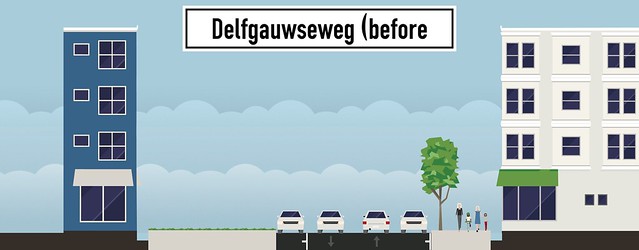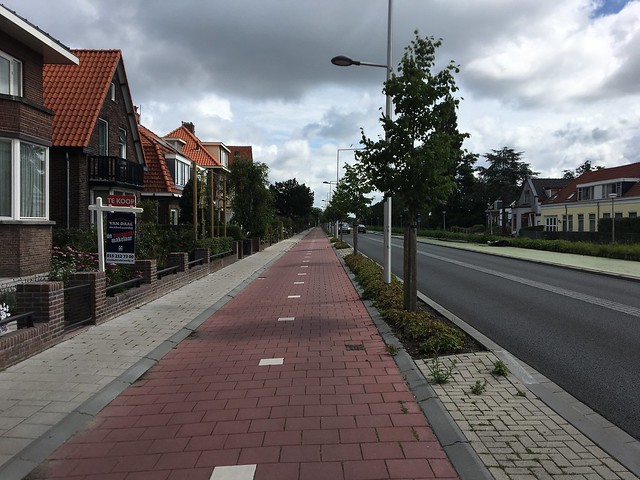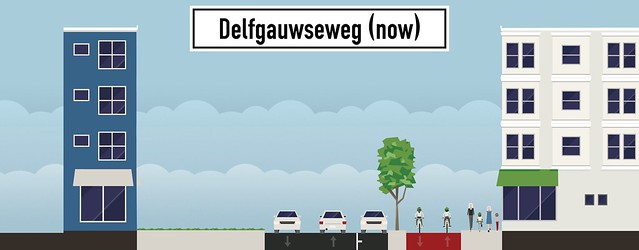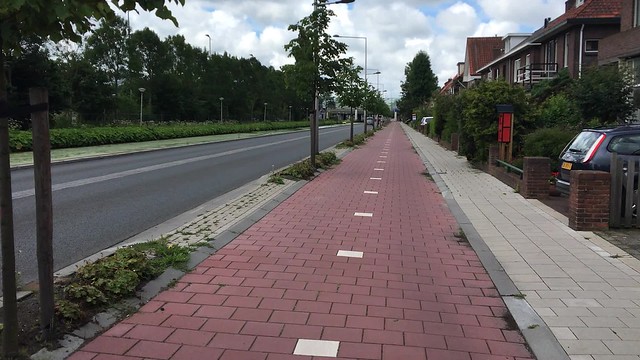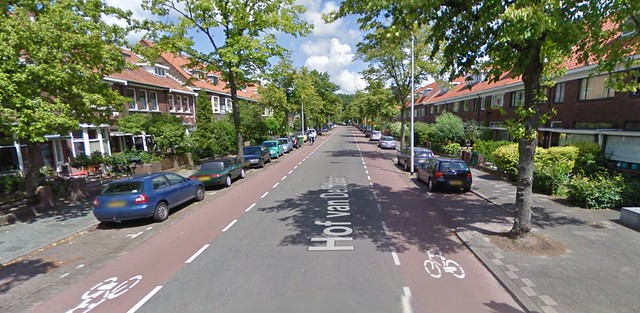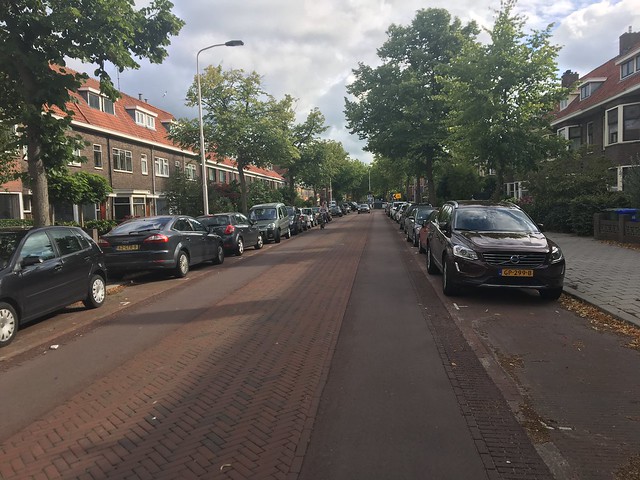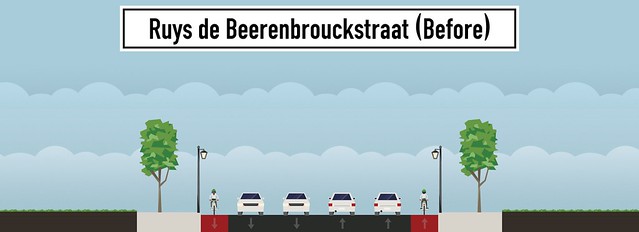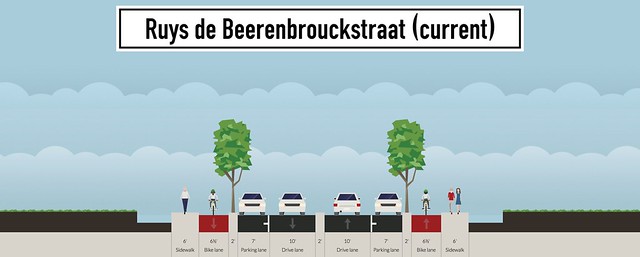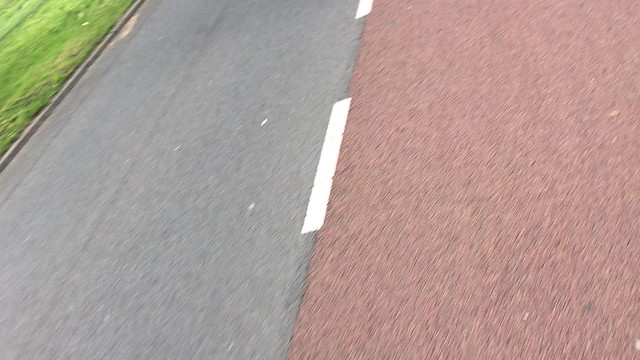1.5. Pedestrians should be separated at speeds above 6 mph; bikes should be separated at speeds above 20 mph. Bike lanes OK if there’s no parking and 1+1 lane; otherwise, prefer cycle track
An essential part of designing roads with systematic safety is knowing when to separate different types of traffic. Dutch traffic engineers often use certain techniques in their road design in order to have cars self-enforce their own speed. Often roads will be narrowed or barriers like speed humps or raised crossings will be implemented in order to encourage cars to travel at lower speeds. Engineering these roads with systematic safety principles has proven to be far more effective than using traditional traffic signs as cars are not very likely to read and obey signs. If cars are traveling over 6 mph then pedestrians should not share the road with cars and should be separated.
- Delfgauweseweg
Before remodeling, this route featured a 1+1 road with a pedestrian walkway and parking on the side of the road. This design forces cyclists to share the road with cars and drastically increases the risk of an accident.
Road design (2009)
The city realized they had more than enough room to create a segregated cycle track that would be safer for both cyclists and drivers. They redesigned the road to have a two way cycle track with a 2 foot median separating the bikers from the cars. They were still able to keep some on street parking off to the side.
Current road design (2017)
This road is now an example of a route in which separation was added for cyclists in order to improve safety. The road was converted from bike lanes (next to parking) to 2-way cycle track separated from the main road. This new road design allows cars to continue traveling at 20 mph or higher while ensuring the safety of cyclists. Cyclists can enjoy a two way cycle track that is separated from the main road by a 2 foot median. Cars are still given access to their driveways along the road, however, the separated cycle track gives bikers an enjoyable and stress free commute. The cycle track is paved with red brick and trees were also planted in order to improve the aesthetics of the road.
- Hof van Delftlaan: demoted to 30 km/h, with road narrowed a good deal (you can see difference in Google StreetView)
This road began with parking on either sides and advisory lanes for bikers. However, the road still had a high speed limit which put bikers in danger. The engineers realized the best way to lower speeds on this street would be to narrow the road in order to encourage self regulated speed.
Road design (2009)
The redesigned road is much narrower and is paved with brick in order to alert drivers that they should travel with caution. Cars still have 6.6 feet for parking and the advisory lanes are still there, however, they the red asphalt is less prominent when surrounded by red brick road. Instead of creating more room for bikers, the engineers were able to successfully slow down cars by simply giving them less room to drive. Now the cars are traveling slower than 20 mph and it is not necessary to have a separated cycle track. Despite the narrower road, the advisory lanes are still 4.5 feet and the center is 7.2 feet giving both cyclists and drivers a comfortable amount of room.
Current road design (2017)
- Ruys de Beerenbrouckstraat: separation added. Converted from bike lanes to 1-way cycle track.
Current road design (2017)
This street was previously was very wide and had bike lanes, however, the city redesigned the road to decrease the cars speed. They removed two stop lights and make it easier for pedestrians to cross by converting it into a 1+1 road. They also raised the crossing intersection and paved it with red brick to make it clear to drivers that they need to lower their speeds. segregated cycle track now allows bikers a comfortable riding experience with easy access to the grocery store and again increases the safety of bikers and pedestrians.
- Buitenhofdreef
This road is an example in which bike lanes are safe enough to use for cyclists. Cars have 7 feet for parking, bikes have a 6 foot bike lane and the road is 7.2 feet. Both cyclists and cars have more than enough room to use the lane with out causing an accident. However, while it is a generally comfortable road to ride on, the principles of systematic safety state that a cycle track would be much more preferred.


